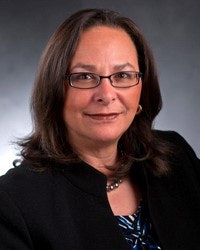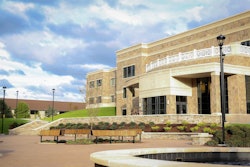Michigan State University (MSU)’s implementation of on-campus support services and pre-college initiatives within the community is one of the many reasons it makes Diverse’s Top 100 undergraduate and graduate degree programs for minority students.
James Cotter, MSU’s director of the office of admissions, calls MSU the “institution of the people” as well as the “institution of the state” because it is considered the original land-grant university.
“We see more applications from the state of Michigan, we admit more students from the state of Michigan and we enroll more students from the state of Michigan than any of the other institutions in the state of Michigan,” says Cotter.
Paulette Russell, who is the director of the office for inclusion and intercultural initiatives, defined the mission of land-grant institutions as being “expected to provide broader access to higher education and the opportunities that flow as a result of graduating from colleges and universities.”
 Paulette Russell
Paulette RussellIn the fall of 2016, of the 50,344 students enrolled, MSU had representations from all of Michigan’s 83 counties, all 50 states and 138 countries around the world. Among the 7,950 students from the incoming class, 24.7 percent were minority students, 13.6 percent were international students, 9.7 percent were first-generation college students and 18.5 percent were Pell Grant recipients, according to MSU’s website.
“The state of Michigan has a very diverse population and as a result, I think students look to Michigan State as a place for tremendous opportunity,” says Cotter. “And as a result, students of color have looked to Michigan State as a place where they feel like there is opportunity to come, to grow and to learn like all other students.”
To keep the focus on Michigan communities, MSU established pre-college programs for local youth. The Summer Scholars Program is a three-week program to help prepare first, second and third year high school students for the college environment. In order to apply, students must be a part of the urban school districts of Benton Harbor, Chicago, Detroit, Flint, Grand Rapids, Lansing and Saginaw, according to the program’s website.
According to MSU officials, the Native American Business Institute program was created due to low Native American enrollment. The college-readiness program specifically targets Native American high school students. Participants can get a sense of academic and professional opportunities available to them.
“I believe [MSU] has a reputation of being accessible to students and that would be regardless of your income, your status as first-generation or [even] third-generation,” says Russell. “We have done, I think over the years, more work to identify promising students in terms of outreach into high schools and the ways in which our faculty extend their research into broader communities where we can attract students of color.”
Over the past two years, MSU has seen a 7 percent decrease among Black students on academic probation. Additionally, this year, the six-year graduation rate for Black students’ is now at 65 percent with an increase of 6 percent, according to Russell.
In comparison to MSU’s total student average of 91 percent for first-year retention rate, African-American student’s rate is 86 percent, American Indian student’s rate is 65 percent, Asian student’s rate is 88 percent, Latino student’s rate is 85 percent, two or more race student’s rate is 88 percent and White student’s rate is 93 percent, according to “Diversity at MSU: 2016-17 Student and Workforce Data Report”.
“Our goal is to continue to close any gaps between our students of color and majority students,” says Russell.
MSU is one of 11 schools part of the University of Innovation Alliance (UIA), which aims to increase the number of low-income students with degrees.
As part of the initiative, which began in 2014, the 11 university members “pledged to scale successful programs across their campuses to graduate an additional 68,000 students in the next decade,” according to a UIA press release.
Thus, MSU reorganized its housing system and broke the areas into five “neighborhoods” including the Brody Neighborhood, North Neighborhood, South Neighborhood, River Trail Neighborhood and East Neighborhood. Within each neighborhood, students have access to academic, career and purpose, intercultural, health and wellness and community living support services.
MSU also has culture and identity programs available on campus including the LGBT Resource Center, Mosaic: The Multicultural Unity Center, the Multi-Racial Unity Living Experience and Intercultural Aid Program and Office of Cultural and Academic Transitions.
“When we talk about diversity at Michigan State, we talk about all kinds of diversity,” says Cotter. “It isn’t only racial and ethnic diversity but gender diversity, socioeconomic diversity and geographic diversity. This is an institution that back in 1855, was created to be an institution of the people. I think the sense that students feel from Michigan State and certainly the aura about the institution is that this place engages with students from very vastly different backgrounds and gives students an opportunity to have a voice and to have an impact.”
This article appeared in the August 23, 2018 edition of Diverse and is one in a series of profiles about some of the institutions that made our Top 100 list.



















